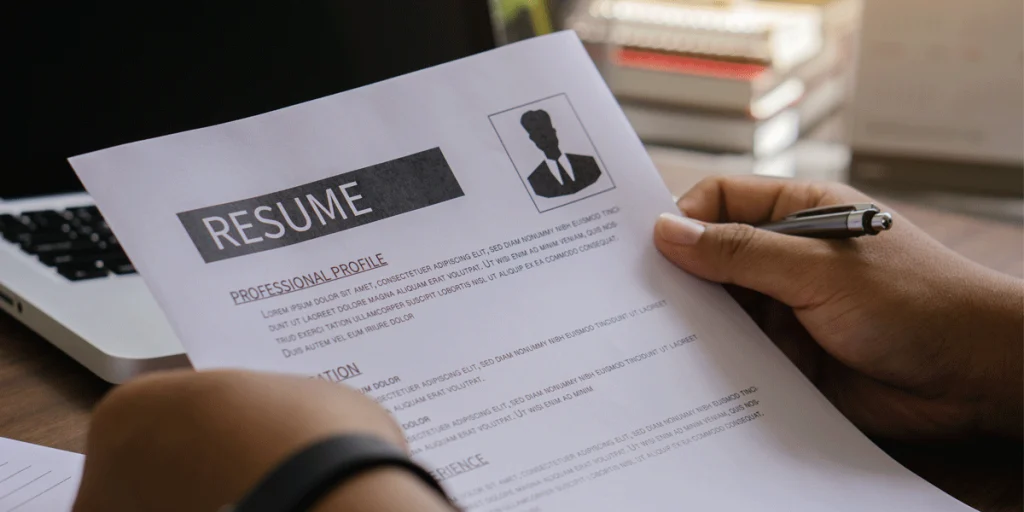Tips for Writing a Resume for Entry-Level Jobs

Creating a resume for entry-level roles requires a careful balance of showcasing your potential and presenting your limited experience in a way that catches an employer’s attention. This guide offers actionable tips to help you craft a resume that leaves a lasting impression.
Start with a Clear and Professional Header
The header is the first section employers see, so it must look polished and professional. Include your name, phone number, email address, and LinkedIn profile (if it’s complete and professional).
Ensure your email address is simple and appropriate—avoid using overly casual or quirky handles. Use a format like:
If you have a personal website or portfolio, including the link here can further demonstrate your capabilities, especially for creative or technical roles.
Write a Strong Objective Statement
An objective statement is particularly important for entry-level resumes, as it highlights your enthusiasm and summarizes your aspirations in a concise way.
Tailor your objective to the specific role and employer. For example:
- “Motivated and detail-oriented marketing graduate eager to contribute analytical and creative skills to support innovative campaigns at XYZ Company.”
- “Recent computer science graduate with hands-on experience in coding and problem-solving, seeking an opportunity to develop software solutions that enhance user experiences.”
Avoid generic statements, and instead focus on aligning your goals with the company’s mission.
Focus on Transferable Skills
Even if you have limited professional experience, you likely possess skills that are valuable to employers. These can come from academic projects, volunteer work, internships, or part-time jobs.
Common transferable skills to highlight include:
- Communication: Demonstrated through writing assignments, presentations, or customer service roles.
- Teamwork: Developed during group projects, sports teams, or community initiatives.
- Problem-solving: Gained by tackling challenges in academic or extracurricular activities.
Use examples to illustrate how you applied these skills effectively.
Highlight Education
For entry-level roles, your education section plays a significant role. List your degree, the institution, graduation date (or expected graduation date), and any relevant coursework or honors.
If your GPA is impressive (typically 3.5 or higher), include it. If not, focus on other academic achievements, such as scholarships, awards, or leadership roles in student organizations.
For example:
- Bachelor of Business Administration, University of XYZ, May 2024
- Relevant coursework: Marketing Analytics, Consumer Behavior, Financial Accounting
- Dean’s List: Fall 2021, Spring 2023
Include Relevant Experience
While you may not have extensive professional experience, you can still include internships, volunteer work, part-time jobs, or campus involvement that relates to the role you’re pursuing.
- Use bullet points to describe your responsibilities and accomplishments.
- Focus on outcomes and quantifiable achievements, such as “Assisted in planning an event that attracted 200 attendees” or “Increased social media engagement by 15% over two months.”
- Tailor each description to emphasize skills and experiences that align with the job.
Use a Skills Section to Your Advantage
A dedicated skills section allows you to emphasize specific abilities that are relevant to the role. For entry-level candidates, this is a great way to balance limited experience.
Include both hard and soft skills, such as:
- Hard skills: Proficiency in Microsoft Office, graphic design tools, or programming languages like Python or JavaScript.
- Soft skills: Time management, adaptability, or interpersonal communication.
Be honest about your proficiency levels—misrepresenting your abilities can backfire during interviews.
Showcase Extracurricular Activities
Employers appreciate well-rounded candidates who demonstrate initiative and passion beyond academics. Include extracurricular activities that highlight leadership, teamwork, or creativity.
For example:
- Treasurer, University Environmental Club
- Managed a $5,000 budget and coordinated fundraising events, increasing club funds by 20%.
- Volunteer Tutor, Community Literacy Program
- Provided weekly tutoring sessions to 15 students, improving reading comprehension scores by an average of 10%.
Such experiences reflect your commitment to growth and community involvement.
Tailor Your Resume for Each Job
A common mistake is submitting the same resume to multiple roles. Instead, tailor your resume for each job by emphasizing relevant skills and experiences.
- Use the job description to identify key skills and qualifications the employer values.
- Reorganize and rephrase your bullet points to reflect those priorities.
This personalized approach shows employers that you’ve taken the time to understand their needs.
Pay Attention to Formatting
A clean, professional layout is essential to ensure your resume is easy to read. For entry-level roles, simplicity works best.
Key tips for formatting:
- Use a single, legible font like Arial, Times New Roman, or Calibri, sized between 10-12 points.
- Avoid large blocks of text; use bullet points for clarity.
- Keep margins consistent and leave enough white space for a balanced appearance.
Your resume should be no longer than one page, ensuring every word serves a purpose.
Proofread and Review Thoroughly
Errors in your resume can overshadow even the most impressive qualifications. Before submitting your resume, proofread it carefully for spelling, grammar, and formatting issues.
Ask a mentor, professor, or friend to review your resume. A fresh perspective can help catch mistakes or identify areas for improvement.
Include a Cover Letter
While not technically part of your resume, submitting a tailored cover letter alongside it can strengthen your application. Use the letter to expand on specific achievements or skills mentioned in your resume and explain why you’re a strong fit for the role.

 What Happens After Your Security Alarm Goes Off?
What Happens After Your Security Alarm Goes Off?  How Make-Good Services Ensure Smooth Lease Transitions and Compliance
How Make-Good Services Ensure Smooth Lease Transitions and Compliance  The Shift from Concept to Real-World 3D Build Projects
The Shift from Concept to Real-World 3D Build Projects  Effortless Office Moves in Melbourne
Effortless Office Moves in Melbourne  SEBI’s Latest Regulations for Investment Advisory Services in India
SEBI’s Latest Regulations for Investment Advisory Services in India  Exploring the Most Effective Business Services for Entrepreneurs
Exploring the Most Effective Business Services for Entrepreneurs  The Evolution of Industry: From the Industrial Revolution to the Age of Automation
The Evolution of Industry: From the Industrial Revolution to the Age of Automation